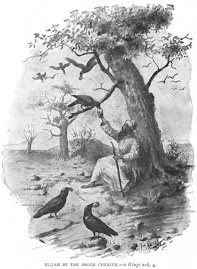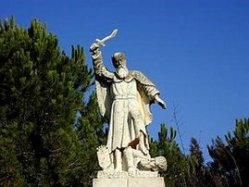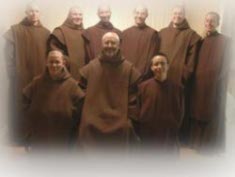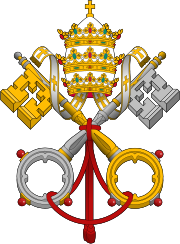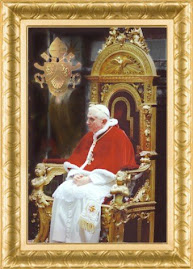The lateral chapels, which are separated from the nave and each surrounded by lovely candlelit balustrades, are serene little corners attracting faithful devotees. One of these chapels is dedicated to St. Ignatius and his tomb is situated under the altar (pictures 11-13). The Chapel is the example of Baroque magnificence, with lapis lazuli, alabaster, semi-precious stones, all kinds of colored marbles, gilded bronze, and silver plate. It took more than 100 artists, under the direction of Andrea Pozzo to accomplish this magnificent artistic effects. St Ignatius' original solid silver statue (picture 16) was carted off and melted down by Napoleon's French in 1798. Directly across from St. Ignatius' chapel is that of the first Jesuit missionary saint, Francis Xavier, designed by Pietro da Cortona (1596-1669) and Carlo Maratta (1625-1713). A plaque tells us that the saint's arm, "which blessed so many converts in far away lands," now resides in the silver and lapis reliquary above the altar (pictures 14,15). Two more lateral Chapels are of great devotional significance and are dedicated to the Holy Trinity (picture 17) and Sacred Heart of Jesus (picture 18). To the left of St Ignatius' Chapel is situated little chapel of the Madonna della Strada, which hosts an image from the façade of Ignatius' first church (pictures 19-21). At the back of the Church we can venerate Cross lying on the floor with Jesus just nailed on it, the Cross is of natural size (picture 22).
Now we move to St Ignatius Church located very close to Il Gesu.
The Church of St. Ignatius was constructed half a century later than Il Gesù. It is entirely Baroque in style, and can be said to represent the Jesuits' triumphant phase, and that of the Counter Reformation. This was originally part of the Roman College, one of the Society's earliest and finest educational institutions. Founded in 1551 as a "school of grammar, humanities, and Christian doctrine, free of charge," the Roman College embodied St. Ignatius' conviction that "all the good of Christianity and the world depends on the good education of the young" (as his spokesman wrote to Philip II of Spain in 1556). By the early seventeenth century, the Roman College's original chapel had become too small for its bustling 2,000 students. Gregory XV Ludovisi, who was a Roman College alumnus and had canonized Ignatius in 1622, nudged his nephew Cardinal Ludovico Ludovisi into funding a new church. Work of architectural design was entrusted to the College's own mathematics professor, Orazio Grassi, and the church was opened in 1651. As mentioned above, the Church of St. Ignatius originally formed part of the large and complicated complex of the Roman College. It now faces on to one of Rome's most unique (rococo) and lovely piazzas. Its tripartite façade is very similar to that of Il Gesù, which, as we have said, provided the model for many Jesuit churches worldwide (picture 23). St Ignatius interior presents with huge nave and side pulpit (picture 24). Much of the transept ceiling painting was done by young art students at the Roman College, under the guidance of their professor, Brother Andrea Pozzo. We can identify portraits the students did of each other and of their relatives. The final important characteristic of St. Ignazio is that it is a superb example of Baroque illusionism. When money ran out before a dome could be built, the clever Jesuit artist Andrea Pozzo (1681-1701) painted a fake dome over the altar. The trompe d' oeil perspective is the biggest joke in Rome (the uninitiated standing underneath never guess that the ceiling is really flat) (pictures 25)
The fresco shows St. Ignatius in Glory and his Apostolate in the World and has four monumental women, appropriately dressed to represent the four continents which were being converted by Jesuit missionary activity at that time. This triumphant burst of emotion and color seems a fitting tribute to Jesuit successes and the victorious Catholic Revival, one century after Ignatius' first church was opened for worship (pictures 26,27). One of the chapels close to main altar is dedicated to Pope Gregory XV who canonized St Ignatius, was alumni of Roman College and took care of securing funds for building of the Church (picture 28). In two side chapels, two of the Jesuits' most beloved young saints are buried, St. Aloysius Gonzaga [1568-91], who refused the honor of becoming a Spanish prince to study at the Roman College, entered the Jesuit order, and died at the age of 23, after ministering in Rome's plague hospitals; and St. John Berchmans [d. 1621], a young student at the Roman College, who died here at 22 years of age. The elaborate Baroque tombs of these appealing Saints face each other from both sides of the transept (pictures 29,30) The Church also contains relics of great Jesuit Cardinal St Robert Bellarmine (picture 31).
text adopted from In Italy online






















